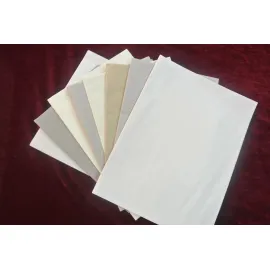Is it Safe to Wrap Your Food in Food Wrapping Paper?
In a world focused on health and sustainability, it's natural to question the safety of everyday products, including food wrapping paper. Concerns about potential harmful chemicals or contaminants have led to a growing debate about the safety of using food wrapping paper. Let's dive into the main features, advantages, and provide clarity on whether it is safe to use food wrapping paper.
Food wrapping paper is a commonly used material for packaging and preserving food. It serves various purposes, including protecting food from moisture, air, and contamination, extending its shelf life, and making it easier to transport. However, it's important to note that not all food wrapping papers are created equal, and understanding their composition is essential in determining safety.
One of the key considerations when assessing the safety of food wrapping paper is the choice of materials. Traditionally, wrapping papers were made from materials like wax-coated paper or plastic films, which raised concerns due to their potential for chemical leaching into the food. However, modern advancements have led to the introduction of safer alternatives.
Many food wrapping papers in the market today are made from materials such as parchment paper or unbleached paper. These papers are typically free from harmful chemicals and are non-toxic. Parchment paper, for instance, is treated with a silicone coating to enhance its non-stick properties, making it safe for use in cooking, baking, and wrapping food.
Another important aspect to consider is the use of food-grade certifications. Reputable manufacturers often ensure that their food wrapping papers meet specific regulatory standards. Look for certifications such as FDA (Food and Drug Administration) approval or the European Union's food contact directive, which assure that the paper complies with rigorous safety requirements.
Advancements in eco-friendly packaging have also led to the emergence of innovative materials for food wrapping, such as beeswax wraps or reusable silicone food covers. These options provide a sustainable and safe alternative to traditional wrapping papers, as they are free from harmful chemicals and can be easily cleaned and reused.
When using food wrapping paper, it is crucial to follow proper handling and storage guidelines. Avoid using wrapping papers at extremely high temperatures, as this can cause them to degrade and potentially release harmful substances. Additionally, always store food wrapped in paper in a clean and dry environment to prevent bacterial contamination.
It's important to recognize that food wrapping paper alone may not completely guarantee food safety. One must also consider the overall hygiene and handling practices when it comes to storing and consuming food. Properly wrapping food only serves as an additional layer of protection, helping to preserve freshness and prevent contamination.
In the grand scheme of things, utilizing food wrapping paper has several advantages that make it a convenient choice. Besides safeguarding food from external factors, it also helps reduce food waste by extending its shelf life. This, in turn, contributes to sustainability efforts and promotes responsible consumption practices.
In conclusion, the safety of food wrapping paper largely depends on the materials used, certifications obtained, and proper handling. Opting for food wrapping papers made from non-toxic materials, such as parchment or unbleached paper, ensures minimal risks of chemical leaching. Additionally, looking for reputable certifications provides further assurance of safety compliance.
Remember to follow recommended guidelines for handling, storage, and cleanliness to maximize food safety. Ultimately, food wrapping paper is a valuable tool in maintaining the freshness, preservation, and convenience of food, making it an essential component of any well-stocked kitchen.
So, rest assured, wrap your favorite treats with confidence, and enjoy the peace of mind that comes with safely preserving your food while reducing waste — all thanks to the humble, yet mighty, food wrapping paper.
Disclaimer: The content provided in this article is for informational purposes only. It is essential to consider individual sensitivities, allergies, and specific food safety guidelines when using food wrapping paper.



